Redwoods are among the oldest trees still alive on Earth and the tallest organisms to ever live. Scientists have found fossils of them dating back over 200 million years ago, well into the time of the dinosaurs. When I call them awesome, I mean it in the biblical sense of the word.
There are only three species of redwood left on the planet. Two of them, the coast redwood and giant sequoia, are native to North America. These trees can grow over 350 feet and live for thousands of years. Their frond-like leaves are an evolutionary callback to some of the earliest vascular plants. Jurassic ferns taller than the Statue of Liberty.
The third redwood was thought extinct until 1941, when Chinese scientists discovered a living specimen growing next to a shrine in a remote village in Hubei Province. The locals called the tree shui shan. Water fir. Though it was only about one third the height of the California redwoods, the flaky red-tinted bark and feathery leaves were a dead giveaway. A researcher named it metasequoia glyptostroboides, from the Latin, “kind of like a sequoia, kind of like a swamp cypress.” The discovery made headlines across the globe. Real Indiana Jones stuff. A few years later, American botanists collected seeds from Hubei’s dawn redwood trees to distribute to labs and botanical gardens. Today, as its native range slowly shrinks, the dawn redwood grows in parks, forests, and city streets across the globe. And, of course, bonsai pots.
I am fascinated with dawn redwoods. Unlike the California species, dawn redwoods shed their leaves every fall and grow new ones every spring. (The Xiantou region of Hubei has turned autumn leaf peeping into a tourist draw that’s now on my post-pandemic travel list.) This is an unusual trait for a conifer; the only other deciduous ones are the larches and a couple species of swamp cypress. For the larches, which grow in forbidding cold northern latitudes, going deciduous is a strategy tailored to survive harsh winters. Fossils show us that the dawn redwood too once lived in the Arctic circle, except at that point the area was a humid forest. Paleobotanists hypothesize that dawn redwoods shed their leaves not to withstand the cold, but to make it through the three months of total darkness that accompanied the ancient Arctic winter.
200 million years! 100 times older than the earliest modern humans. How do you even begin to conceptualize time on that scale? Where do we get the gall to say this planet belongs to us?
A deciduous conifer makes for an intriguing bonsai. On evergreen conifers, you have to leave a little bit of the current foliage behind when you prune, otherwise the tree will die. Deciduous trees are more plastic. You can chop them back to a stump and they’ll shoot new branches. This completely changes your training strategy, and since dawn redwood leaves look nothing like most deciduous trees’, you have some interesting and frankly otherworldly style choices. Crazy thing is, we don’t even know what all the style options are yet for a dawn redwood. The oldest cultivated trees are still only 70 years old.
I bought this tree at a Facebook auction a couple months ago. It was styled by the previous owner; all I’ve done is stick it in a larger pot to try and bulk up the trunk. Since then I’ve just been fertilizing and watching it grow. I need to understand more about how it grows. The only growth pattern dawn redwoods follow is their own.
So far it’s thriving, which is good as I have no clue what to do with it yet. For now I’m simply appreciating its antediluvian strangeness.
While trawling eBay a couple weeks ago, I came across this beauty and instantly knew I was buying it. I love the gentle slope of the trunkline and burgeoning nebari. The single long branch halfway up adds a lot of character, and the narrow tufts of foliage right beneath the trunk chop basically look like a California redwood in miniature already. While the other redwood grows wild, I’ll spend this year trying to ramify the tight foliage to improve the illusion of a shrunken giant.
Tree reading
A grim but necessary read on climate change fundamentally altering the National Park Service’s mission from conservation to triage. [New York Times]
Reader Ligaya Mishan shared this funny piece about how—phylogenetically—there’s no such thing as a tree. [Eukaryote Writes Blog]

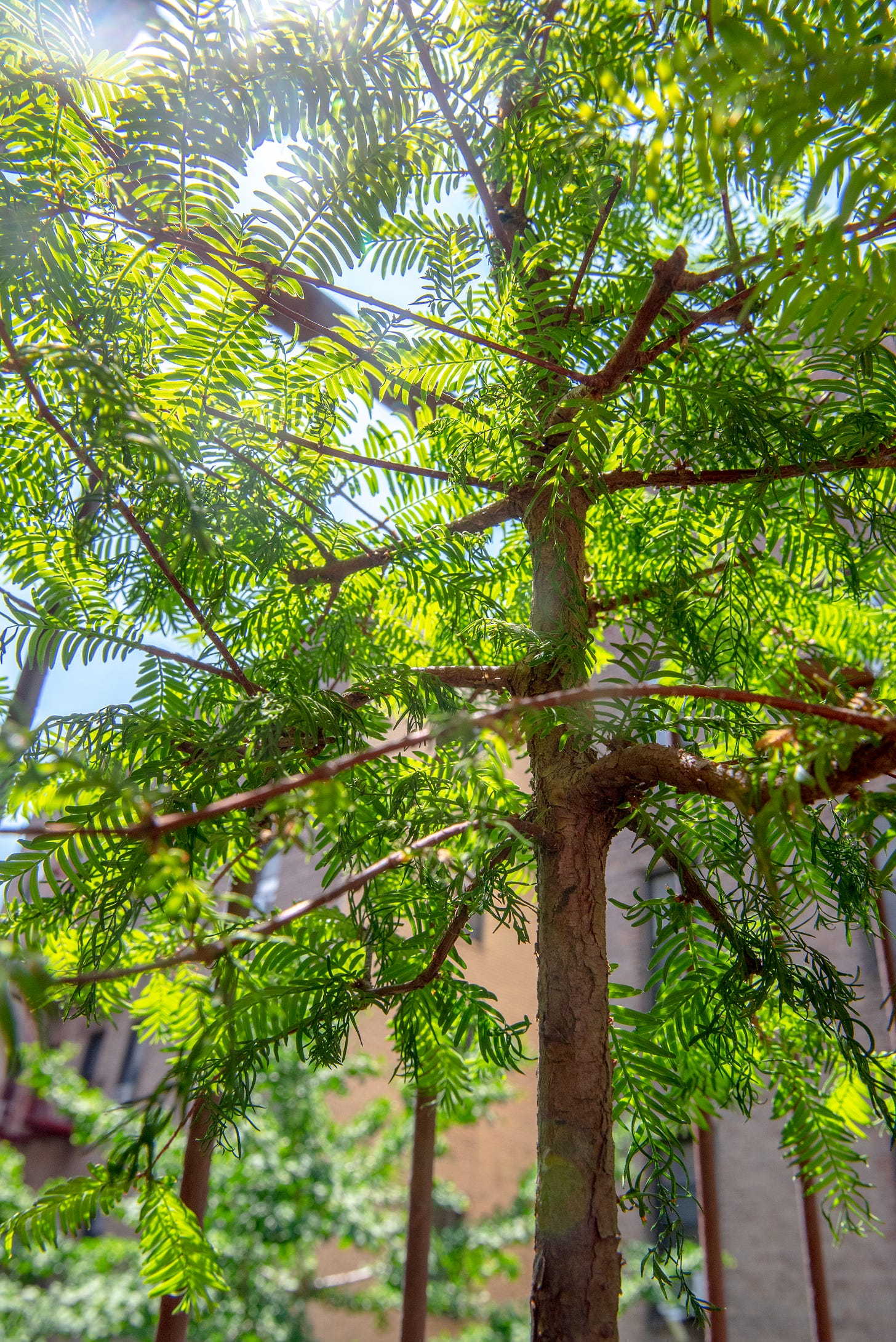
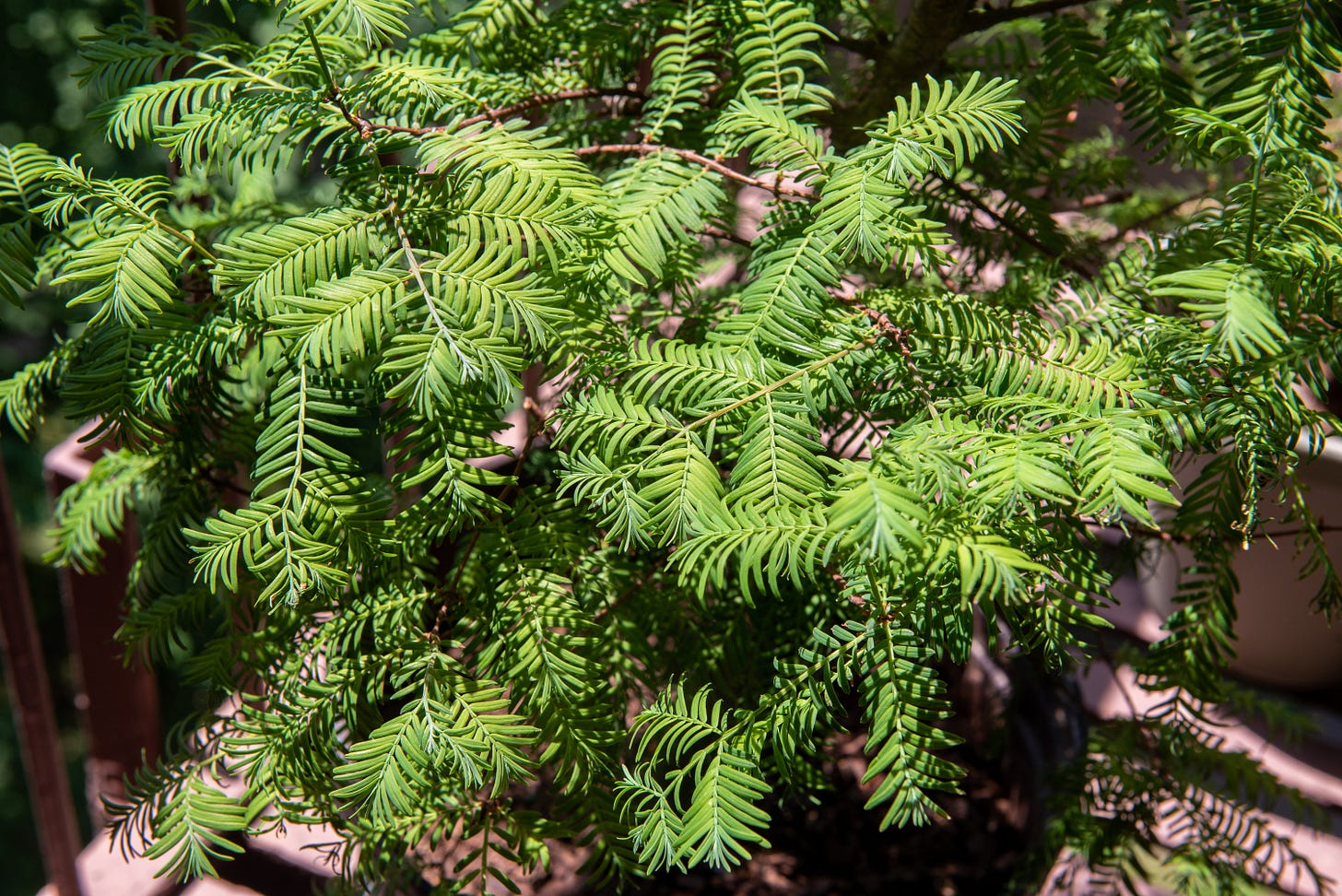
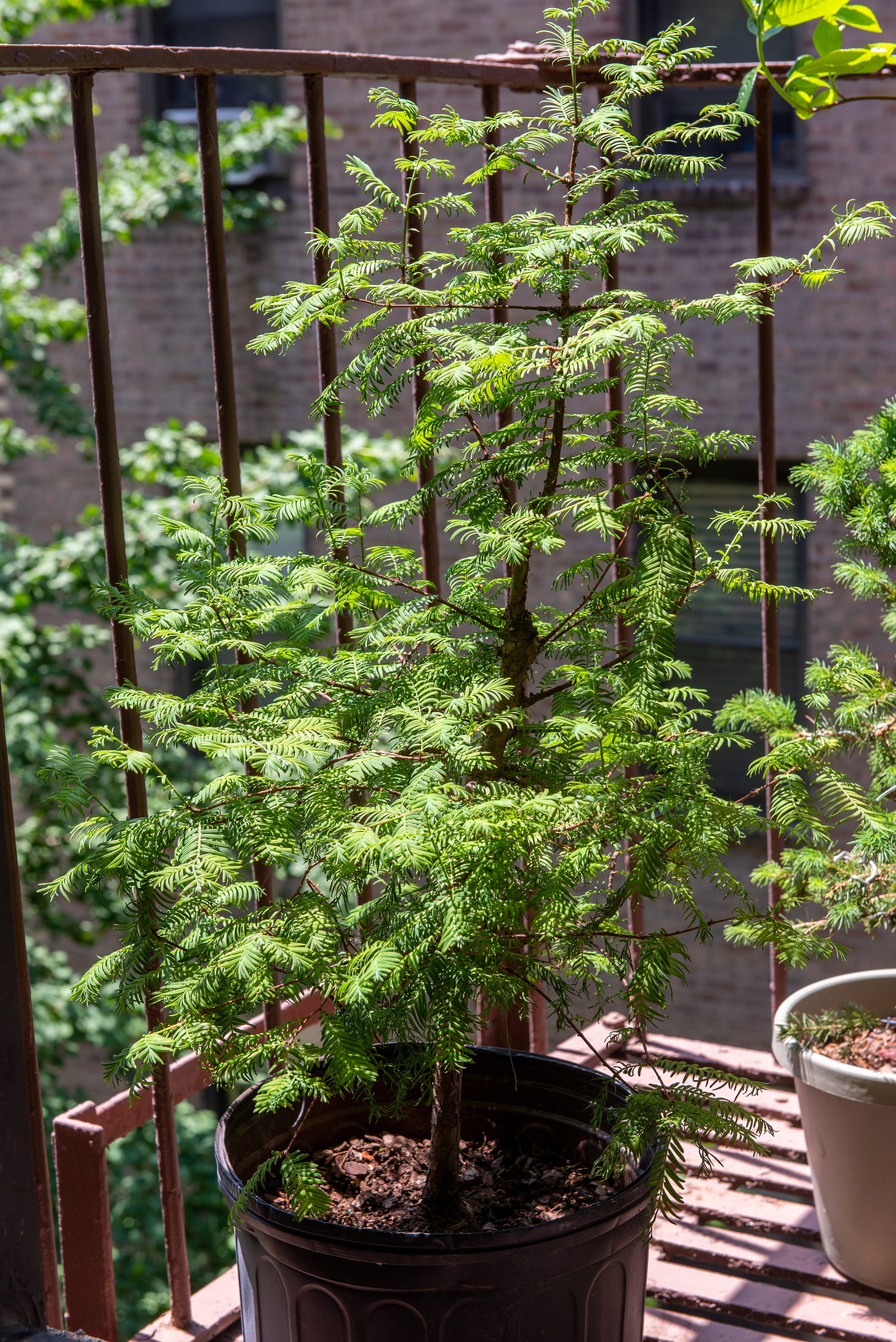
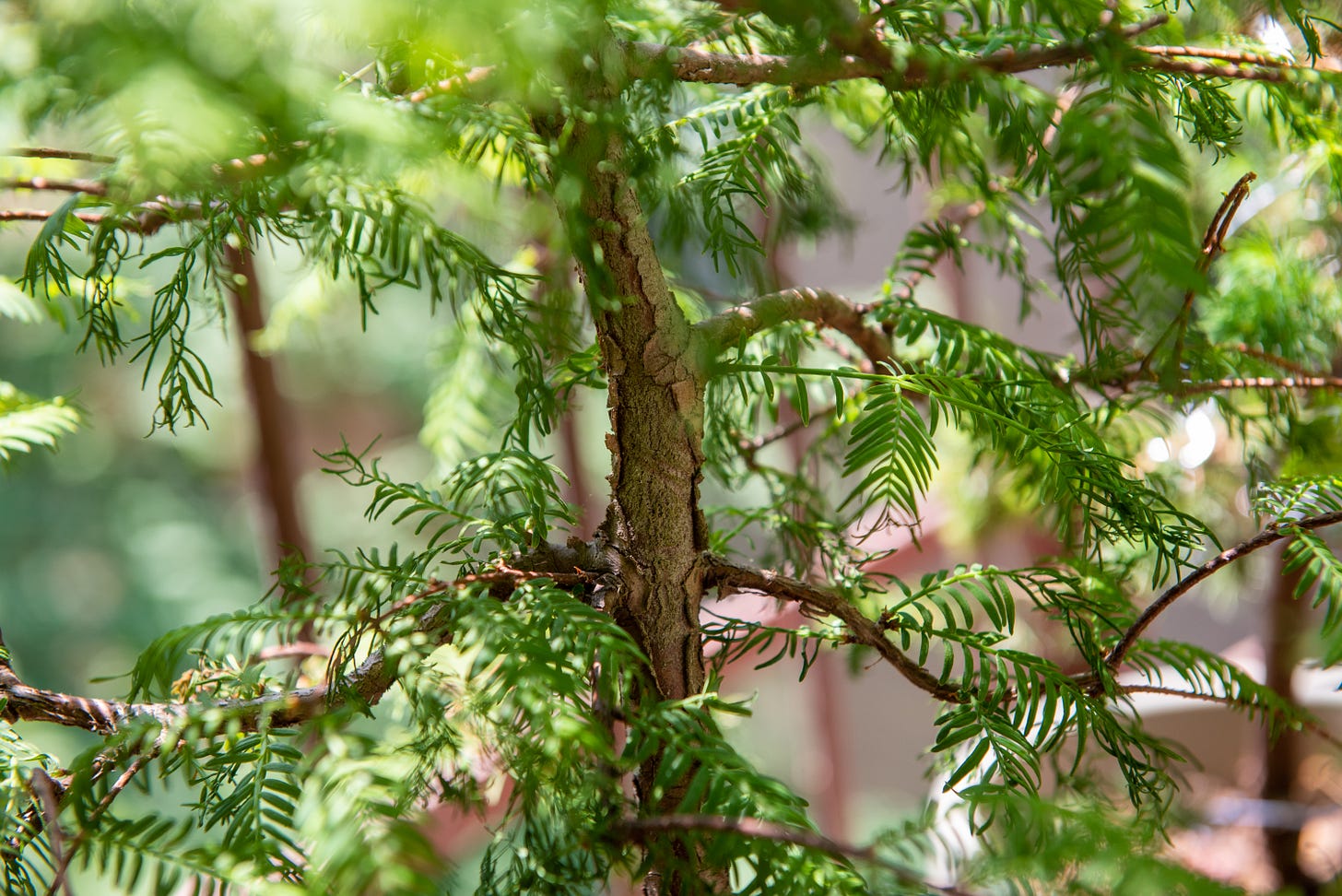
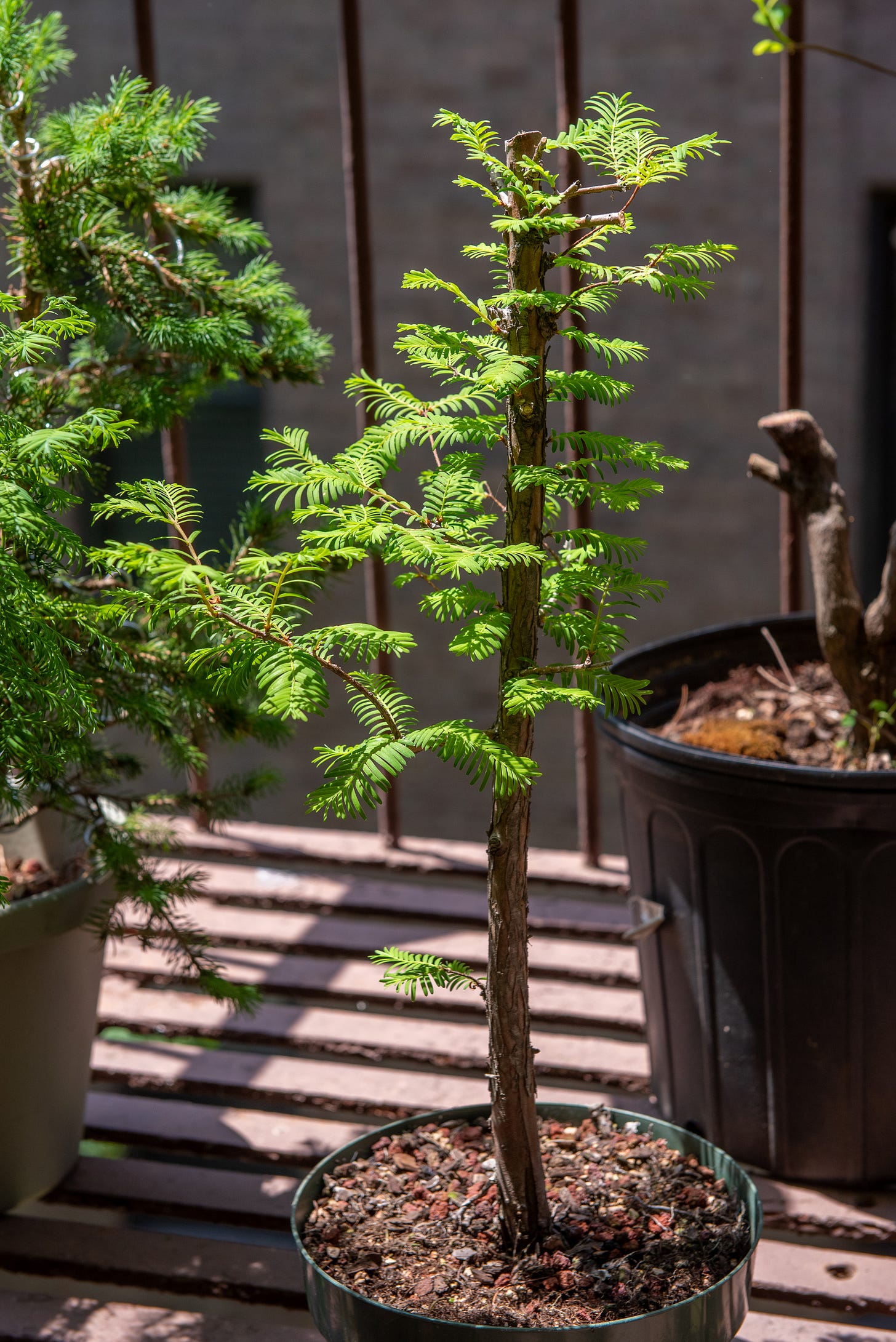
Dawn Redwoods are truly magical - my parents planted one in our front yard growing up and it was absolutely beautiful to see it change through every season! Love how it looks as a bonsai.